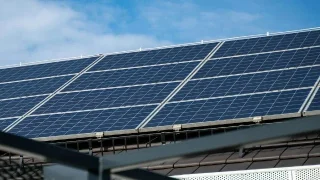
The Centre for Independent Studies welcomes the opportunity to respond to the AEMC’s Draft Terms of Reference for the Electricity pricing for a consumer-driven future Review.
The CIS is a leading independent public policy think tank in Australia. It has been a strong advocate for free markets and limited government for more than 40 years. The CIS is independent and non-partisan in both its funding and research, does no commissioned research nor takes any government money to support its public policy work.
In drafting terms of reference for this review, the CIS believes the AEMC should be careful not to make unwarranted assumptions around CER uptake and coordination and should take a principles-based approach to regulation rather than aiming for particular system outcomes.
The rapid CER uptake and coordination assumed by AEMO is not guaranteed. The Review should consider how best to protect consumers in the short and long term regardless of whether CER uptake and coordination increases, decreases or remains at current levels. This is especially important given how many of these benefits are somewhat mutually exclusive (for example, flexibility in CER use and coordination). Consumers should be free to choose between them.
The AEMC should aim for principles-based regulation focusing on consumer protection rather than an outcomes-based approach that views increased CER uptake and coordination as an end in itself. Consumers should be able to choose to participate in the CER market or not, according to their willingness to bear risks associated with becoming traders of electricity rather than simply consumers.
The responsibility for reducing electricity-related emissions and ensuring the grid can handle peak demand lies with generators, governments, network service providers and grid operators. These entities are well placed to handle increasing complexity and risk. The review should bear this in mind and avoid shifting the increasing complexity and risk of maintaining cheap, reliable, and clean electricity onto unwilling consumers — the majority of whom do not own solar panels, home batteries, or EVs.
August 22, 2024
Approach to CER Uptake and Integration Assumptions
The Review should avoid assumptions about the level of CER (and its coordination) in the future grid. While high levels of CER are a significant possibility, it should avoid assuming it is certain, or necessary. This is critical to avoid obliging consumers to become producers and bear more risk than is appropriate.
An example of this is on page 1 of the Draft Terms of Reference, in which the AEMC asserts:
Around one in four Australian houses have solar panels, with one in two expected by 2040… There is predicted to be a surge in electric vehicles in Australia, with approximately 22 million expected to be taken up by 2050… Widespread government commitments to achieve net zero emissions by 2050 are accelerating this shift and CER and DER will play a critically important role in Australia’s energy transformation, helping to reduce overall system costs, improve reliability and achieve a secure, low-emission energy supply for all.
Increasing levels of CER is not the only — nor necessarily the most cost-effective — way of achieving 2050 net zero targets. Without significant government incentives, rooftop solar and EV uptake may not reach the levels assumed. The broad-scale implementation of export tariffs by DNSPs is likely to reduce the number of consumers seeking to install or replace rooftop solar panels.[1] Similarly, EV sales have failed to show consistently rapid growth amid delays in the charging infrastructure rollout largely due to distribution network congestion from higher penetration of renewables.[2] Regulation should allocate risk appropriately and protect consumers by assuming a reasonable set of possible futures.
Given the majority of consumers do not have rooftop solar, home batteries or EVs, non-CER consumers must be adequately protected from energy bill increases arising from cross-subsidies provided to CER consumers. Even if consumers without energy resources become the minority, the same care should be taken to protect their interests. The Rules need to protect consumers into the future regardless of whether CER uptake and coordination increases, decreases or remains at current levels.
Another key assumption needing further interrogation is that CER will help to reduce overall system costs. The CSIRO’s GenCost report confirms rooftop solar and home batteries are more expensive per unit of energy than their large-scale counterparts.[3] AEMO’s Integrated System Plan does not include any cost for CER in its optimisation, so it can’t support any claim that a certain level of CER uptake and coordination is optimal.
While integrating CER may provide benefits to individual consumers, it can stress the overall system without coordination — and coordination itself costs whatever is needed to incentivise coordination in owners. Whether the cost of the necessary incentives outweighs the savings on network expenditure should be interrogated.
The benefits of CER for consumers listed on page 2 include some that are potentially mutually exclusive:
- flexibility in how and when they use energy so they can save money within their own home or business;
- having the option to allow their CER technologies to be used in the wider power system and to be rewarded for that; and
- lower overall spending on network infrastructure.
Consumers allowing their resources to be coordinated necessarily entails reducing their flexibility in energy use. On the other hand, giving consumers maximum flexibility by not coordinating CER is likely to result in higher, rather than lower, network infrastructure expenditure. CER simply cannot provide all these benefits at once — there will always be a trade-off between an individual’s flexibility and savings for the system as a whole.
AEMC also claims on page 2:
Successful integration of CER would also require fewer new large-scale infrastructure projects to keep the system running, which often come with their own integration challenges from acquiring social licence to achieving connection.
Social licence challenges are typically solved by providing large enough incentives to landholders to allow the project to proceed. Integrating CER into the grid also requires incentives, which may be smaller individually but must be paid to many more consumers who own CER. Whether reducing the number of large-scale projects (and their associated social licence costs) by incentivising CER coordination will reduce overall system costs is therefore not guaranteed, but needs to be appropriately assessed.
Additional contradictions on pages 2-3 require resolution:
Successfully integrating CER starts with serving all energy consumers well. The products and services offered, and their prices, must ensure a diverse set of consumers:
1. can continue to use their CER assets for the reasons they bought them
2.have the opportunity and incentive to:
a) adjust their energy use
b) make their CER assets available in ways that benefit themselves and other energy consumers
c) contribute to reducing emissions
3. benefit from efficient and effective integration of CER, whether they own such assets or not.
If a consumer bought solar panels to earn a high feed-in tariff from exporting to the grid, but this tariff structure over-rewards them for the actual benefit their exports provide to the grid, then not all of these aims are able to be achieved at once.
Implementing export tariffs, as many DNSPs have now done, helps integrate solar into the grid by preventing grid stress from minimum demand periods during the day when solar energy floods the system. This encourages exports to be shifted later in the day through storage to match the evening peak demand, which is more beneficial for non-CER consumers than a system without export tariffs. But this comes at the cost of preventing CER owners from using the assets for the reason they bought them.
In this instance, a rooftop solar owner would have to buy a battery to continue receiving net earnings from exporting to the grid — but they may not want to make this purchase. Serving the interests of CER and non-CER consumers necessarily involves a trade-off when CER customers expect outsized rewards for the services they provide to the grid in line with what they have received historically.
Regulation should be principles-based rather than outcomes-based
Ensuring consumers behave in particular ways is not the role of rule makers and regulators. The AEMC should therefore use a principles-based approach, rather than an outcomes-based approach, when determining how to make rules relating to CER and its integration. This would translate to the AEMC allowing a market for CER and its coordination to exist while ensuring adequate consumer protections in alignment with the National Electricity Objective. The AEMC should not attempt to ‘nudge’ consumers in a particular direction with respect to their CER uptake. The Rules should therefore remain neutral in allowing — but not promoting — CER uptake and coordination.
The same applies for energy use. Incentivising consumers to reduce energy use risks putting the needs of the grid above the needs of consumers. The responsibility for reducing electricity-related emissions and ensuring the grid can handle peak demand fundamentally lies with generators, governments, network service providers and grid operators. These entities are capable of managing risk and complexity. Consumers are least likely to have the ability and knowledge to appropriately manage risks and select the optimal solution to such problems. Hence, the focus of the AEMC’s work must remain on consumer protection and not placing expectations on consumers to behave in certain ways.
The AEMC acknowledges that consumers have shown resistance to CER coordination: “We must better understand and respond to the reasons consumers may not want to make their assets available, even when the rewards from doing so may benefit them directly, and the broader community.”
The expectation that consumers should act in a certain way should not be central to rulemaking. The AEMC should not push consumers to enter a market they have no desire to take part in. Rules should merely allow consumers the freedom to participate if they feel confident becoming traders and managing the associated risks.
The AEMC should avoid any process by which an assumption about consumer behaviour and preferences (‘CER is desirable’) becomes a policy (‘CER should be desirable’). Consumers should be adequately protected from risk and complexity, and free to act in their own best interests.
Endnotes
[1] Beazley, Jordan. 2024. “Consumer groups criticise energy companies charging solar panel owners for exporting power.” The Guardian. https://www.theguardian.com/australia-news/article/2024/may/17/energy-companies-charging-nsw-solar-panel-owners-for-exporting-power-criticised-by-lobby-group.
[2] Toscano, Nick. 2024. “Fuel giant Ampol to miss target for electric vehicle charging bays.” Sydney Morning Herald. https://www.smh.com.au/business/companies/fuel-giant-ampol-to-miss-target-for-electric-vehicle-charging-bays-20240819-p5k3j8.html.
[3] Graham, Paul, Jenny Hayward and James Foster. “GenCost 2023-24 report.” CSIRO. https://www.csiro.au/-/media/Energy/GenCost/GenCost2023-24Final_20240522.pdf.








